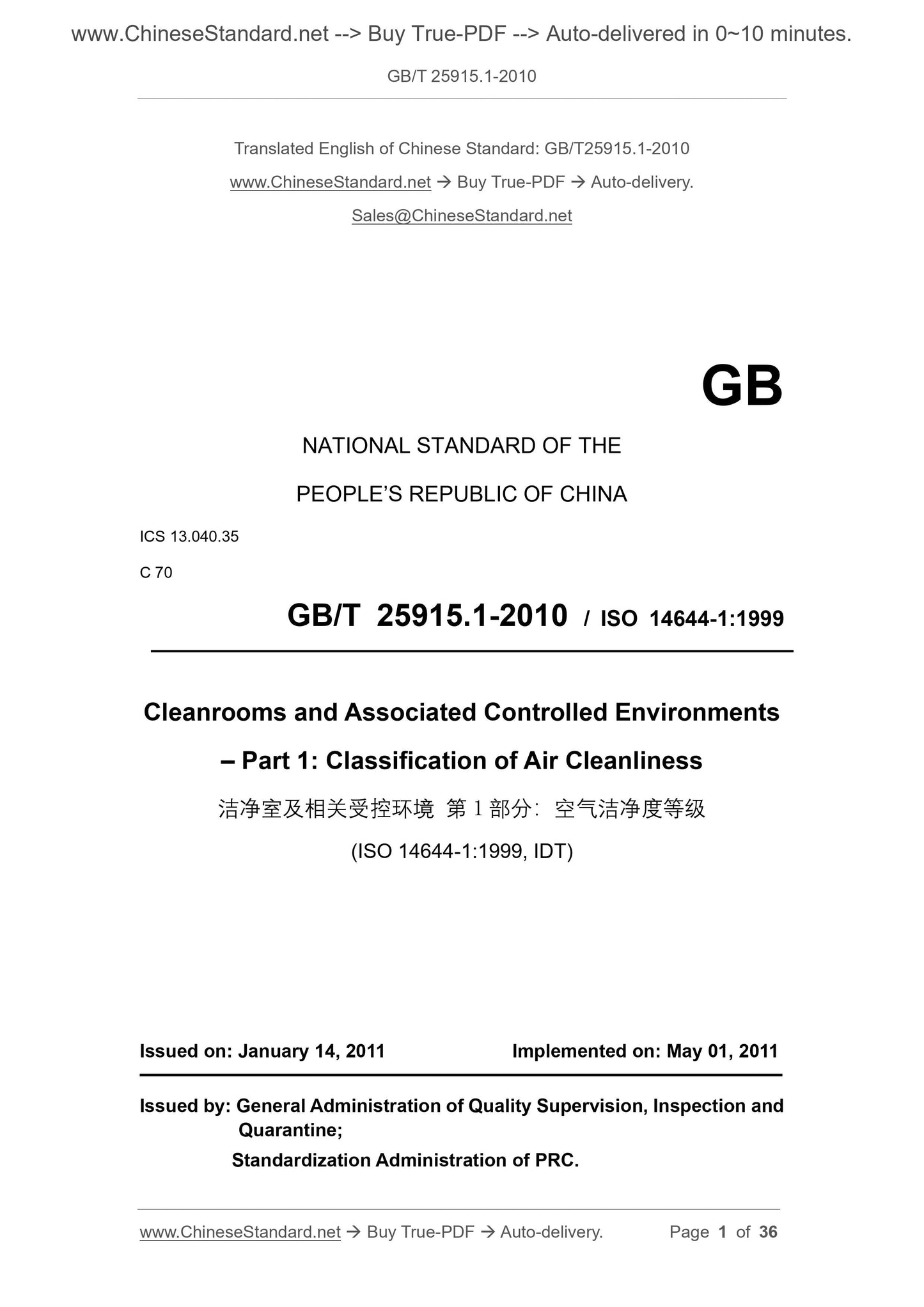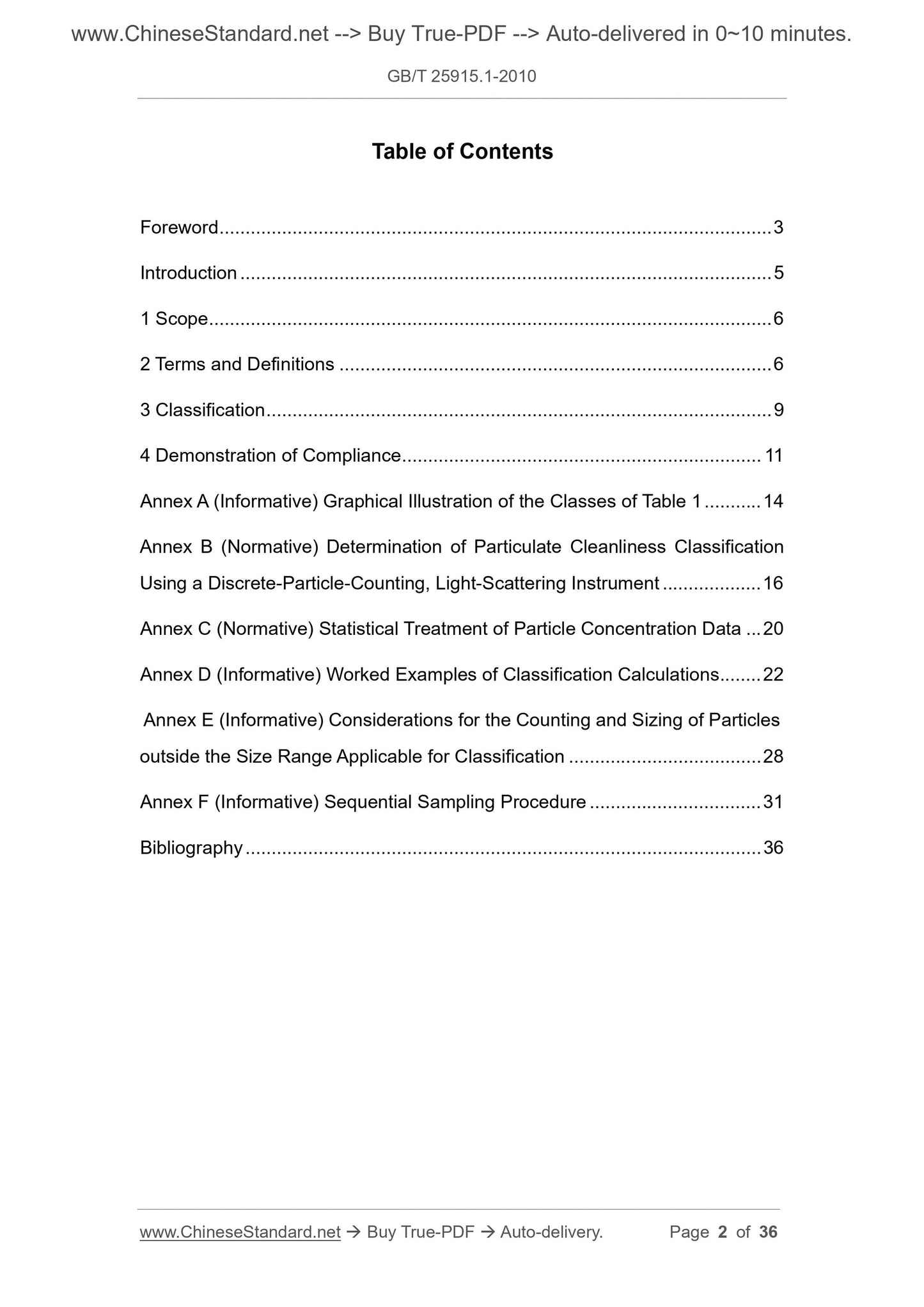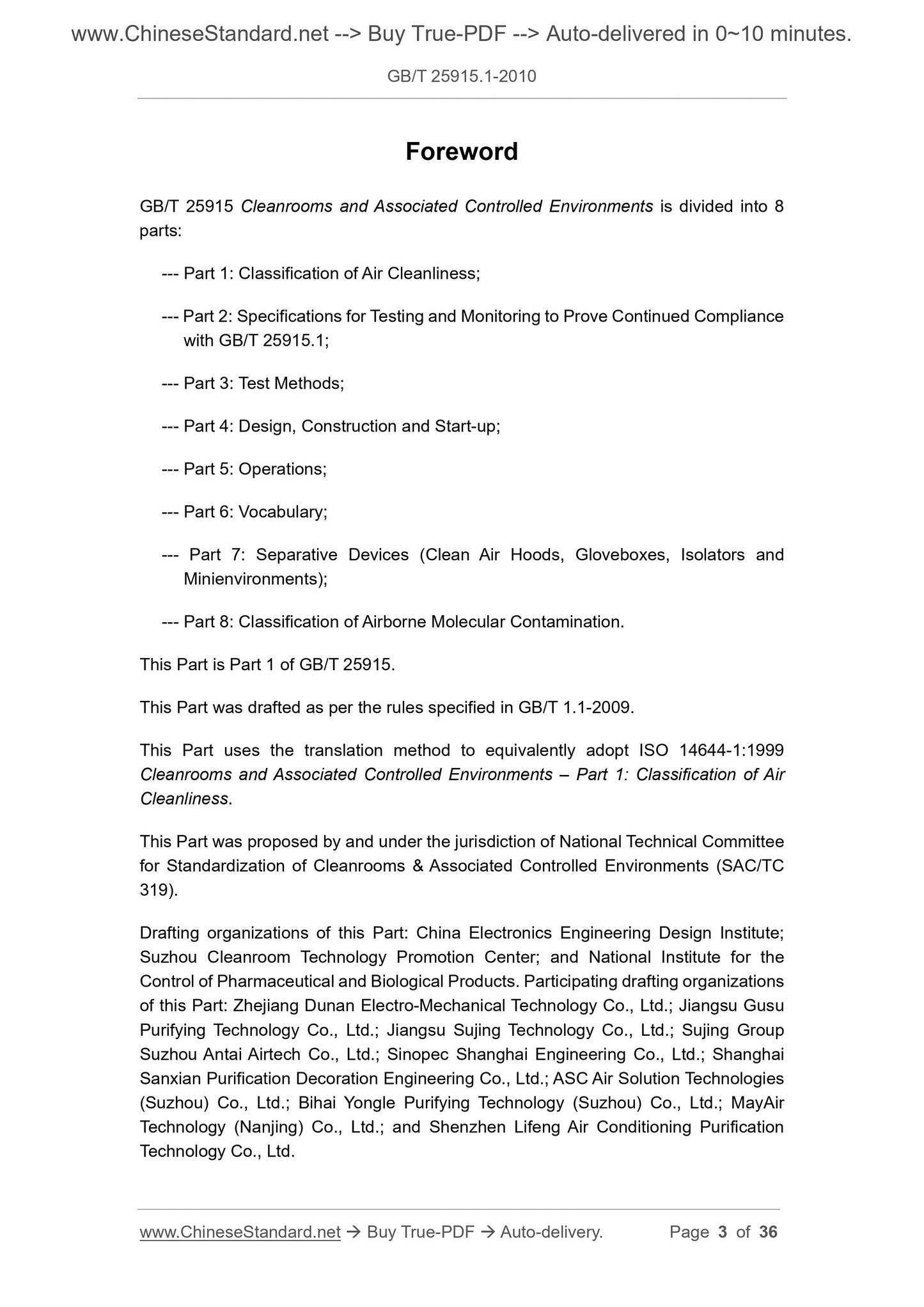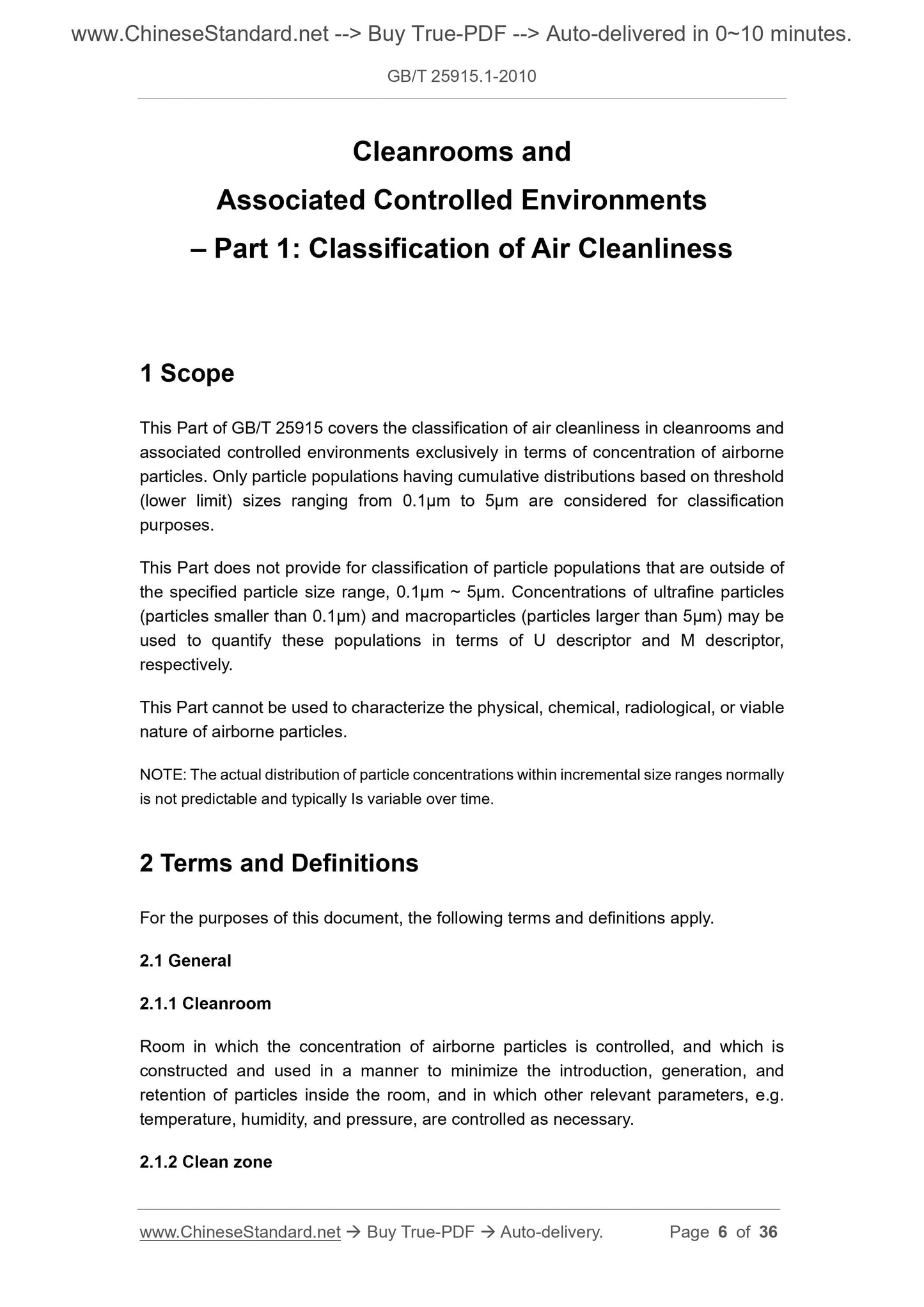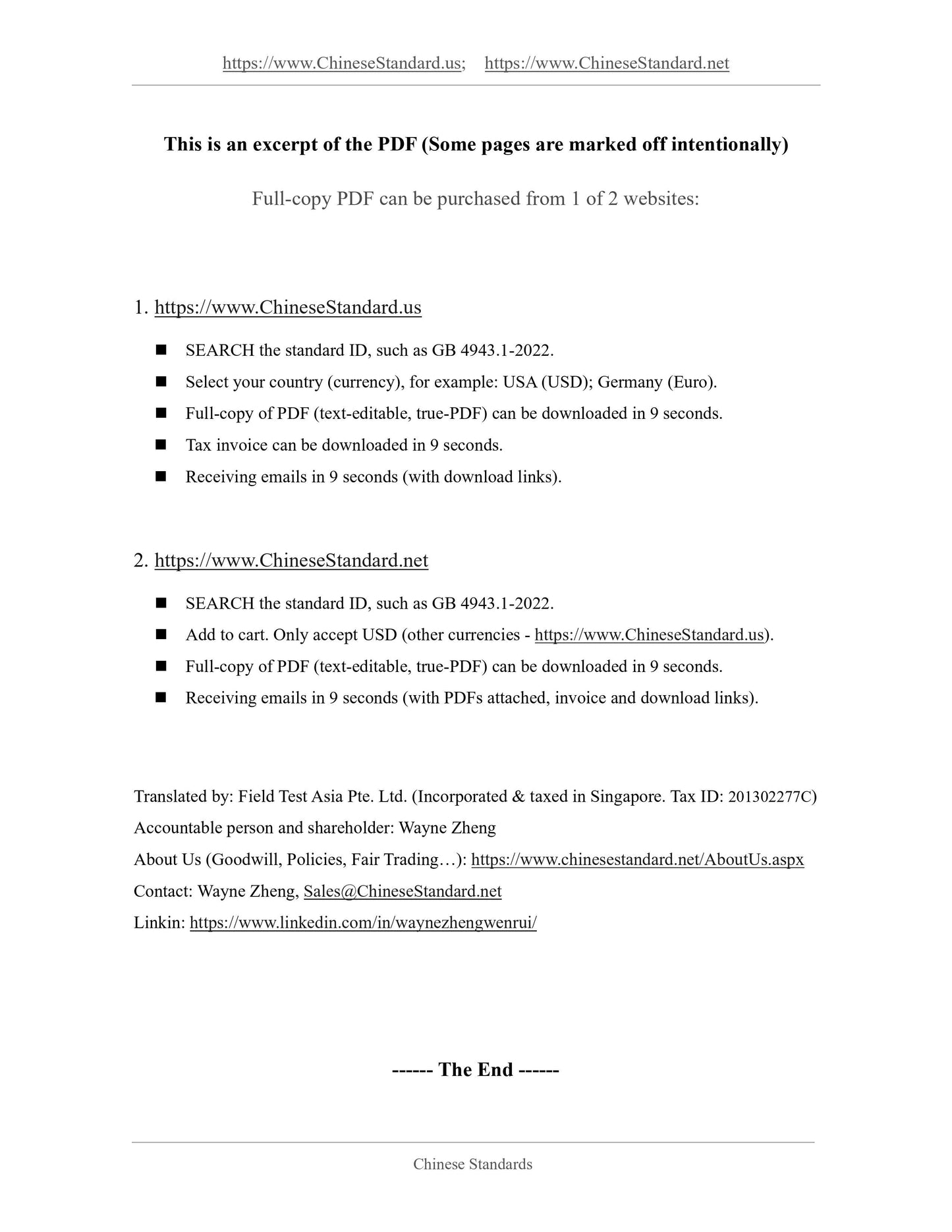1
/
of
5
PayPal, credit cards. Download editable-PDF and invoice in 1 second!
GB/T 25915.1-2010 English PDF (GB/T25915.1-2010)
GB/T 25915.1-2010 English PDF (GB/T25915.1-2010)
Regular price
$320.00
Regular price
Sale price
$320.00
Unit price
/
per
Shipping calculated at checkout.
Couldn't load pickup availability
GB/T 25915.1-2010: Cleanrooms and associated controlled environments -- Part 1: Classification of air cleanliness
Delivery: 9 seconds. Download (and Email) true-PDF + Invoice.Get Quotation: Click GB/T 25915.1-2010 (Self-service in 1-minute)
Newer / historical versions: GB/T 25915.1-2010
Preview True-PDF
Scope
This part of GB/T 25915 divides the air cleanliness grades of clean rooms and related controlled environments only on the basis of the concentration of airborne particles in them.The concentration refers to the total number of particles whose particle size is greater than or equal to the threshold (lower limit) particle size, and the prescribed threshold (lower limit) particle size is 0.1μm~5μm.
This section does not establish a cleanliness level for the total number of particles outside the specified particle size of 0.1μm~5μm. But you can use U descriptor and M to describe
Descriptors, respectively express the total number of ultrafine particles (< 0.1μm) and large particles (>5μm).
This section cannot be used to describe the physical, chemical, radiological or survival characteristics of airborne particles.
Note. The actual distribution of particle concentration greater than or equal to a certain size is generally difficult to predict, and usually changes with time.
Basic Data
| Standard ID | GB/T 25915.1-2010 (GB/T25915.1-2010) |
| Description (Translated English) | Cleanrooms and associated controlled environments -- Part 1: Classification of air cleanliness |
| Sector / Industry | National Standard (Recommended) |
| Classification of Chinese Standard | C70 |
| Classification of International Standard | 13.040.35 |
| Word Count Estimation | 26,240 |
| Date of Issue | 1/14/2011 |
| Date of Implementation | 5/1/2011 |
| Adopted Standard | ISO 14644-1-1999, IDT |
| Regulation (derived from) | Announcement of Newly Approved National Standards No. 2 of 2011 |
| Issuing agency(ies) | General Administration of Quality Supervision, Inspection and Quarantine of the People's Republic of China, Standardization Administration of the People's Republic of China |
| Summary | This Standard specifies air cleanliness level of clean room and associated controlled environments. This standard can not be used to describe the physics of air particulates, chemical, radiological or survival characteristics. |
Share
